If you have a high-traffic blog or a WooCoomerce store, price becomes a secondary factor when choosing a high-traffic WordPress hosting
Speed, Security, and uptime become key factors in this scenario as you may lose thousands of traffic even for a few seconds of downtime.
Are you shopping around for the Best WordPress Hosting For High-Traffic Blogs?
If yes, look no further; you have landed on the right space because, in this article, we will talk about CloudWays Autonomous Hosting, a perfect hosting for high-traffic sites.
Table of Contents
Introduction To CloudWays Autonomous For High-Traffic WordPress Blogs
Before we learn about CloudWays Autonomous Hosting, we need to know the need for specialized hosting, especially for high-traffic blogs.
Understanding The Need For Specialized Hosting In High Traffic Scenarios
Generally, all web hosts offer fixed resources. This means fixed bandwidth, fixed RAM, fixed storage, and so on.
They are good at handling a certain amount of traffic if that does not consume resources beyond the limit.
But how about a sudden spike in traffic? How about a sale on your WooCoomerce store, and are you anticipating a peak in visitors? Can your regular web host handle these scenarios?
No, regular web hosts can never handle sudden spikes in traffic. You need specialized hosting that offers auto-scaling to handle such scenarios. That’s where CloudWays Autonomous shines.
Overview Of CloudWays Autonomous Features Tailored For WordPress Blogs
CloudWays Autonomous is a fully managed WordPress Hosting that automatically scales up or down resources based on the amount of traffic.
It uses the load balancing technology powered by Google Kubernetes Engine (GKE) to automate the scaling of resources.
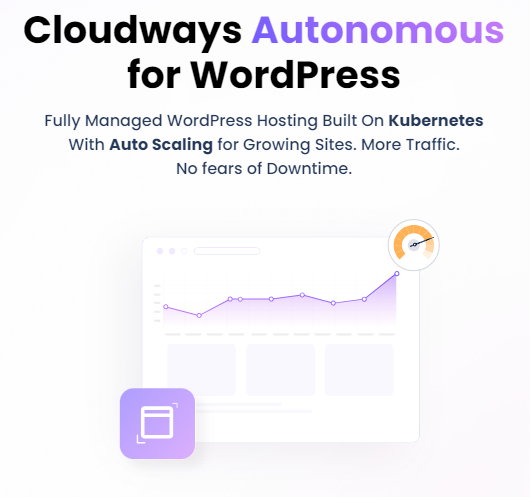
With advanced load-balancing technology, your website is always online and accessible, regardless of how much traffic it gets.
With the Cloudflare Enterprise Plan for free and Redis Object Cache Pro, your website will run faster than before without any complex setup.
One more key point about CloudWays Autonomous is that it is completely managed. You don’t even have the choice of server, RAM, etc. That way, the CloudWays team manages the server independently and gives users the best service.
The beauty of CloudWays Autonomous is that it can automatically scale up or down resources, whereas, with other hosts, you need to do it manually.
You only need to pay extra for the extra resources you consume for any period.
The Unique Challenges Of High-Traffic WordPress Blogs
The main challenge that high-traffic blogs face is downtime during spikes in traffic. Traditional web hosting does not scale resources automatically based on the increase in traffic.
You need to manually upgrade the plan and pay for the remaining term even though your website traffic may return to normal.
Here are the two issues that most high-traffic blogs face when there is a sudden increase in traffic.
Traffic Spike And Their Impact On Blog Performance
Buying a traditional WordPress Hosting plan gives you a fixed bandwidth limit and fixed server resources. You decide the plan based on the traffic projection of your blog.
When there is a spike in traffic for any reason, and when you need extra resources, your only option is to upgrade the plan.
Otherwise, you will see downtime in your blog, or your blog loading speed will be very slow. Because the moment you exhaust all the resources of your plan, web hosts will restrict further utilization of resources.
We all know that speed is a ranking factor for Google. The slow loading speed of a blog badly affects the ranking.
Content Delivery Challenges In Peak Traffic Times
Most web hosts offer access to free CloudFlare CDN plans that do not have enough POPs to serve the content at the same speed across the world. The free plan also has a bandwidth limit restricting content availability at peak traffic times.
Some hosts offer proprietary custom CDN, but again, they throttle the bandwidth when there is a surge in traffic. They also charge a premium for using their custom CDN.
Managing Sudden Increase In Page Views And Interaction
The best way to manage the sudden increases in page views and interaction is to opt for a web host that supports auto-scaling resources.
When there is a surge in traffic, you don’t get time to scale the resources; it takes time manually, and there could be downtime, too.
Auto-scaling is the best solution as it can scale without manual intervention, and you won’t notice any glitches or downtime during the upgrade. When the traffic returns to normal, the resource allocation returns to where it was before, as per your plan.
What Is Auto Scaling, And How Does It Benefit High-Traffic Blogs?
Autoscale WordPress means the automatic scaling of server resources based on the load on the server. It can scale up or scale down based on the need. You only need to pay extra for the extra resources for that period.
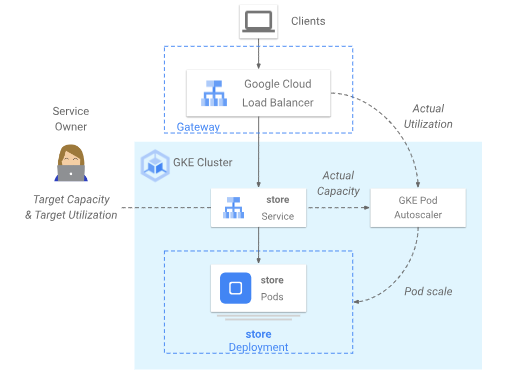
In manual scaling, you need to scale manually, which often involves technical skills and downtime for a certain amount of time.
For high-traffic websites, auto-scaling is a must, as we don’t know when there is a peak in traffic. Auto-scaling also ensures that your website is always available and accessible.
Auto Scaling helps you avoid paying extra for over-provisioning and protects you from under-provisioning, which is a plus.
Definition And Mechanism Of Auto Scaling
Auto Scaling can happen in two different ways. One is horizontal scaling, and the other one is vertical scaling. Both have their advantages and disadvantages.
Horizontal Scaling
When you see a peak in traffic, horizontal scaling adds additional nodes to cope with the traffic. You can virtually add unlimited nodes based on the server resources you want.
When the traffic returns to normal, the nodes are destroyed, so you don’t get charged extra. Horizontal scaling is the best way to handle load on high-traffic sites.
Vertical Scaling
Vertical scaling increases the resources on the same server instead of adding nodes. When the server reaches its optimum usage, you may need to upgrade it, which is not an ideal solution for high-traffic blogs.
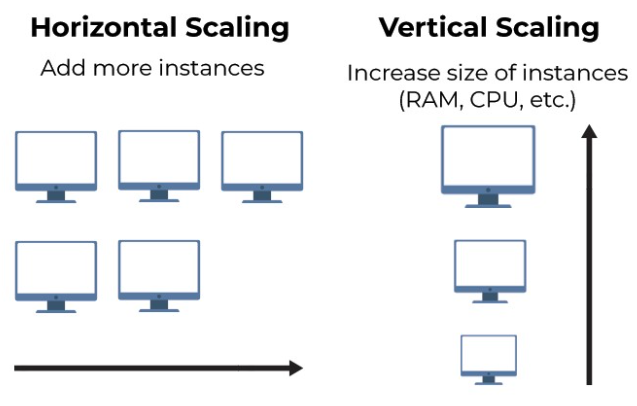
How does auto-scaling Address scalability and availability during traffic spikes?
Auto Scaling ensures that your website is never run out of resources. No matter how much traffic your website gets, auto-scaling ensures that resources are available.
Your server can virtually handle any traffic, especially with horizontal scaling, where additional nodes get added.
The Concept Of True Auto Scaling Vs. Marketing Hype
True Auto Scaling means handling any number of traffic without any manual intervention to upgrade the server.
Many hosts offer auto-scaling, but very few hosts offer true auto-scaling. Auto-scaling does not always mean infinite scaling. Although many hosts claim they provide auto-scaling, they limit your server’s resources.
So, next time you buy a hosting plan with auto-scaling, ensure that you get true auto-scaling because that will only work for high-traffic blogs.
How True Auto Scaling Works On CloudWays Autonomous?
CloudWays offers true auto auto-scaling with the help of Google Kubernetes Engine (GKE). With CloudWays, your blog will never go offline, as CloudWays can handle any amount of traffic with true auto-scaling.
Here is a graphical representation of CloudWay’s Autonomous architecture. It consists of four layers: your application is at the bottom, and the CDN sits at the top.
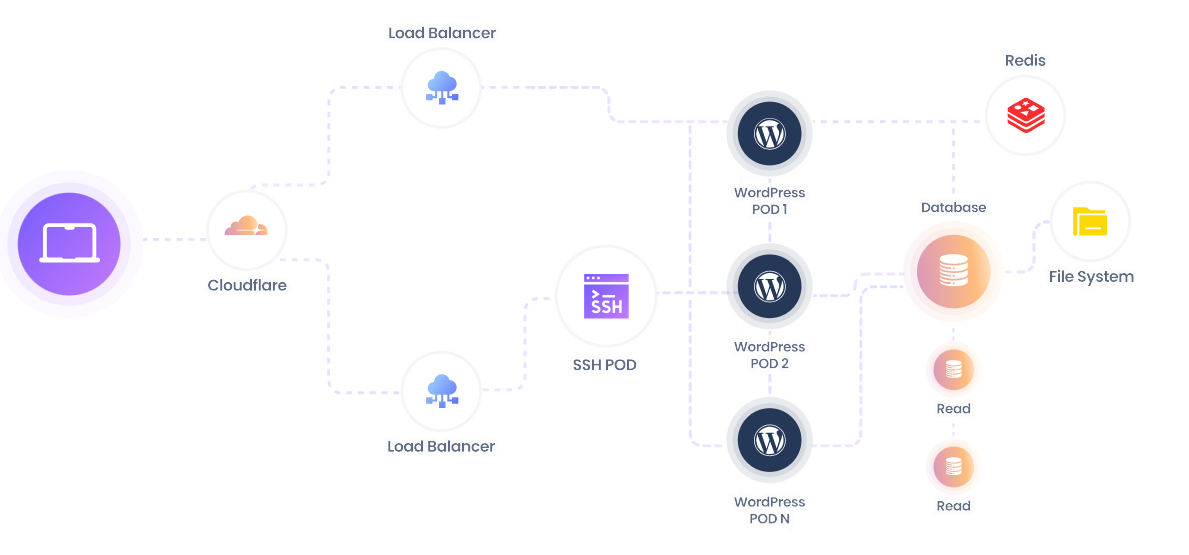
The bottom layer is where all your WordPress files, database, Radi’s cache, and other relevant files stay.
On top of that, you have the GKE Pods and load balancing mechanism. At the top, the Edge CDN caches the contents using global POPs.
When there is a sudden increase in traffic, the load balancer sends a signal to add additional pods. The load balancer then sends the traffic to those additional pods.
There is no limit on the number of pods the load balancer can create. So, virtually, your server can scale at any level depending on the load balancer’s load.
When the traffic returns to normal, those additional pods are destroyed so that you don’t have to pay extra for additional pods.
With CloudWays, you pay extra only when your website uses additional resources. When the traffic returns to normal, you pay the normal hosting fee.
Overcoming Traditional Hosting Limitations With CloudWays Autonomous
The Inadequacies Of Standard Web Hosting For High Traffic Needs
Standard web hosts can never scale resources the way CloudWays does. Without scaling resources, it isn’t easy to handle sudden traffic spikes.
Even if some hosts offer scaling, they usually provide manual scaling, which may keep your site down for a while. On top of that, you need to pay the extra fee throughout the contract period.
How CloudWays Autonomous Transforms Challenges Into Opportunities
CloudWays has always been a front-runner in introducing new technologies to the web hosting arena.
They know the problem that high-traffic blogs face and came up with CloudWays autonomous, which can handle any traffic without manual intervention to upgrade the server resources.
CloudWays Autonomous brings many features that outperform other web hosts in handling the traffic of high-traffic blogs.
Deploying CloudWays Autonomous For Optimal Performance
Step By Step Guide To Setting Up Your WordPress Blog For High Traffic
You might have heard that Hosting a website on Cloudways is tough, especially if you are moving from the C panel.
Yeah, the Cloudways interface may be confusing for many, but once you get around it, you will find every option well laid out.
We are here to help you host your first website on Cloudways. If you follow the steps mentioned below, you will be done in 10 minutes.
Sounds interesting? Let’s go!
1. Sign Up For Cloudways
First thing first. The first thing you need to do is buy a hosting plan. You can consider clicking this link, which will take you to the Cloudways Autonomous home page.
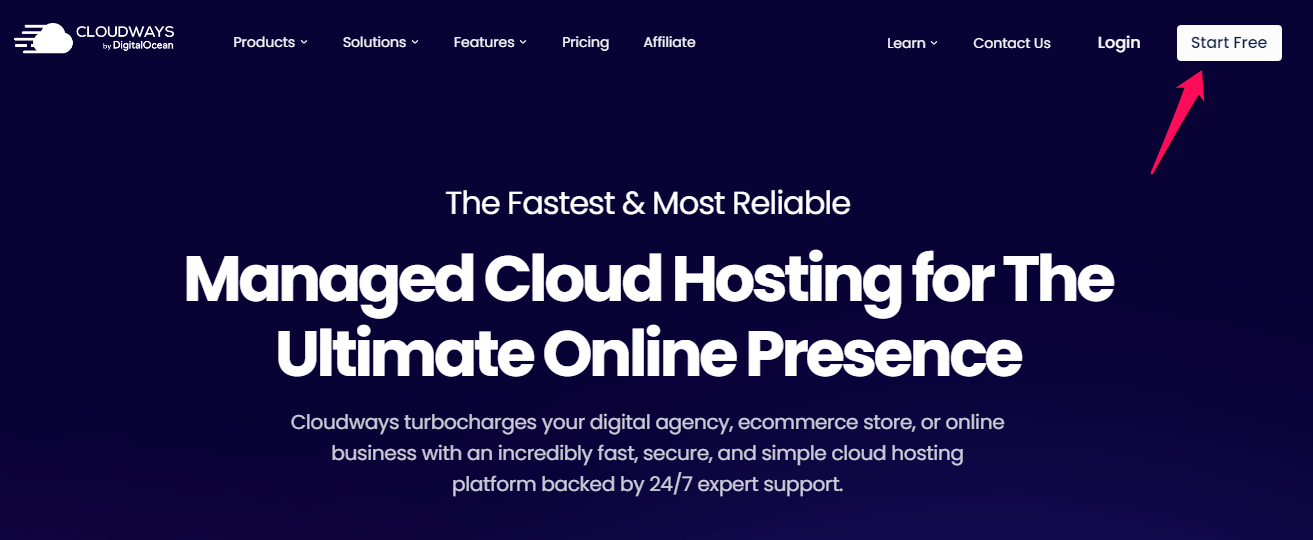
Click on ” Start Free” to access the signup page
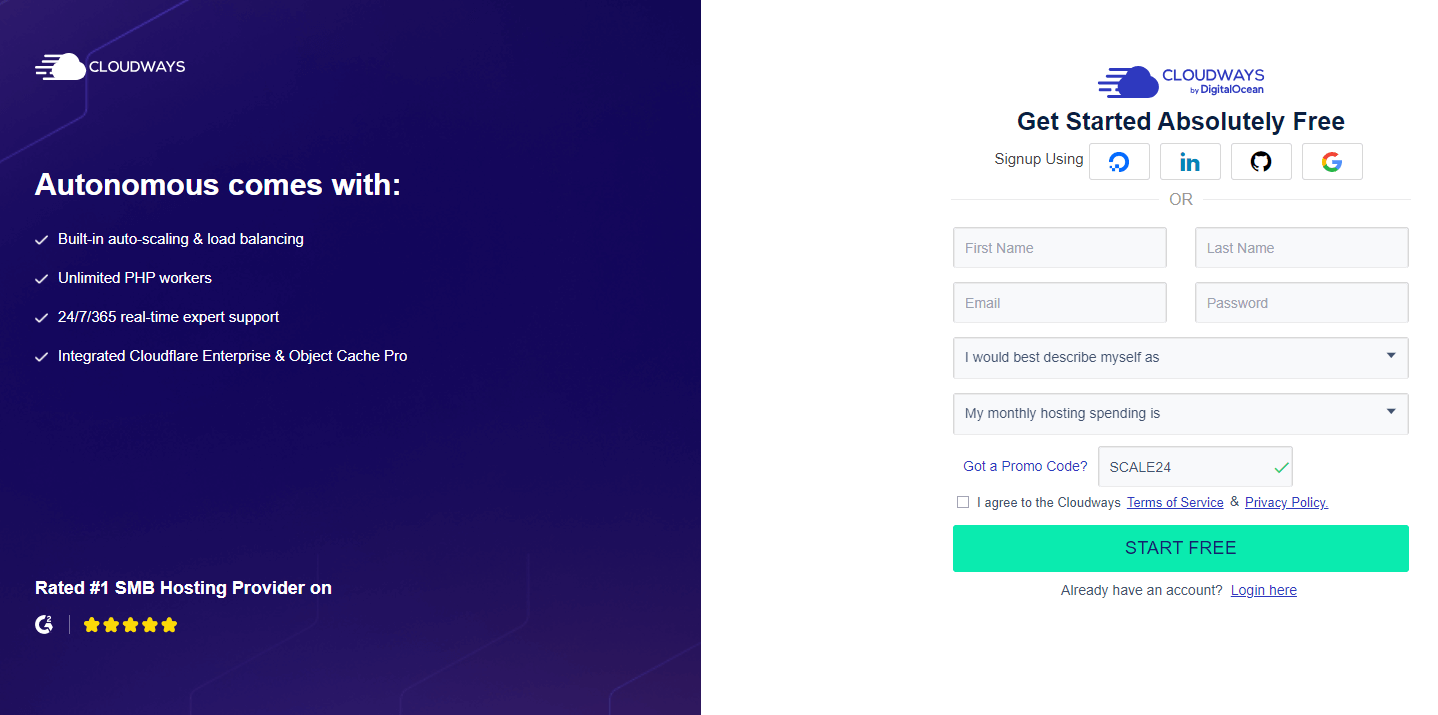
2. Choose Your App
Once you sign up, the next thing to do is to deploy your server. Select Autonomous Apps from the list and click on “Get Started.“
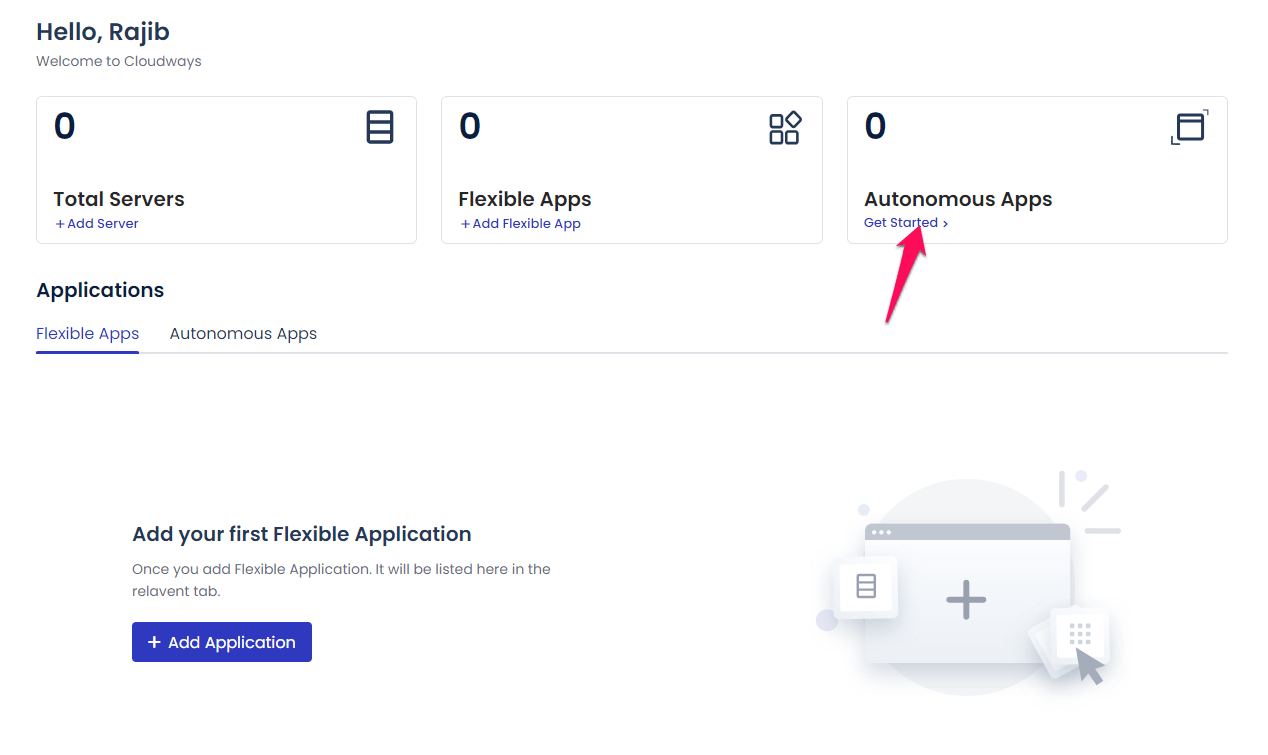
3. Choose Your Plan
Choose a plan based on your requirements and click ” Get Started. “
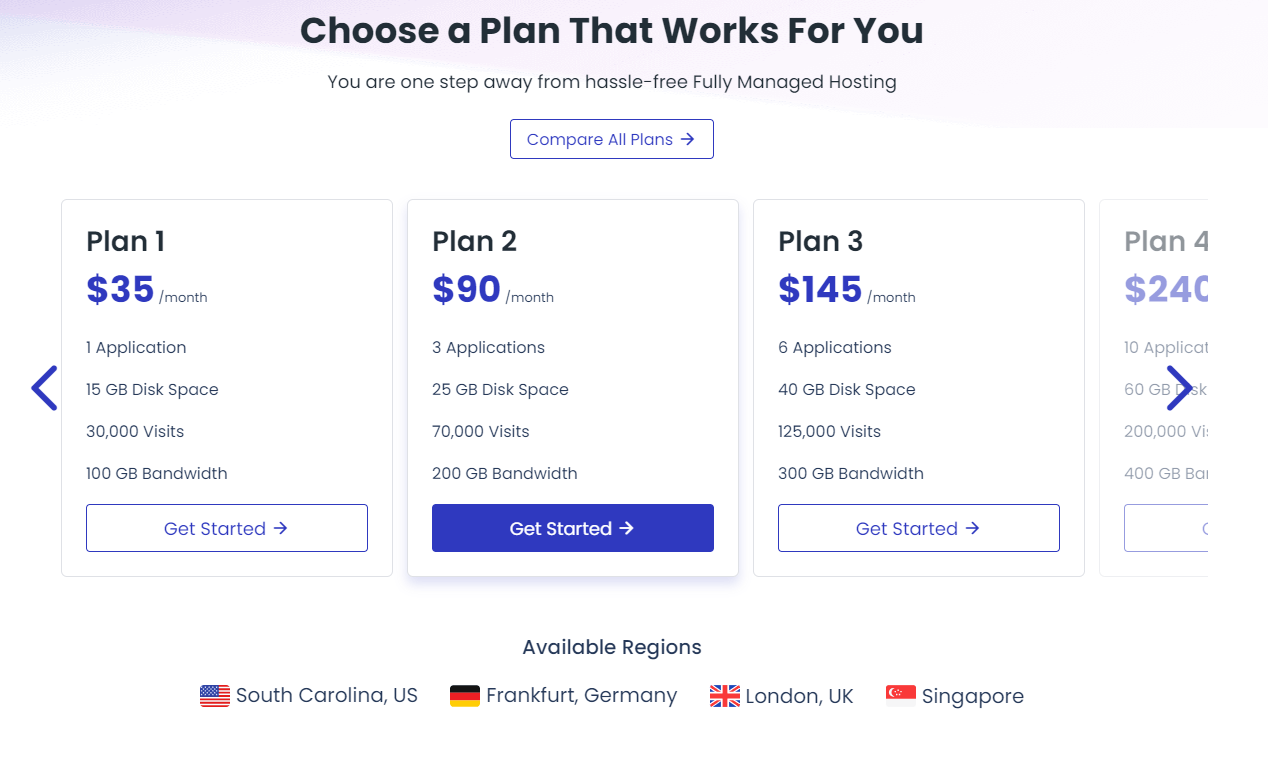
4. Launch Your Application
Once you choose a plan, you will be presented with the application setup window. There, you need to add the application’s name, choose the region, and select the type of application.
Once done, click on ” Add Application “. It will take some time to install the application.

Once the application is installed, it will appear under the application list.

5. Set Up Your Application
The window below shows the interface you will be presented with once you click on the application. All the options are properly laid out so that it’s easy for you to find different settings.
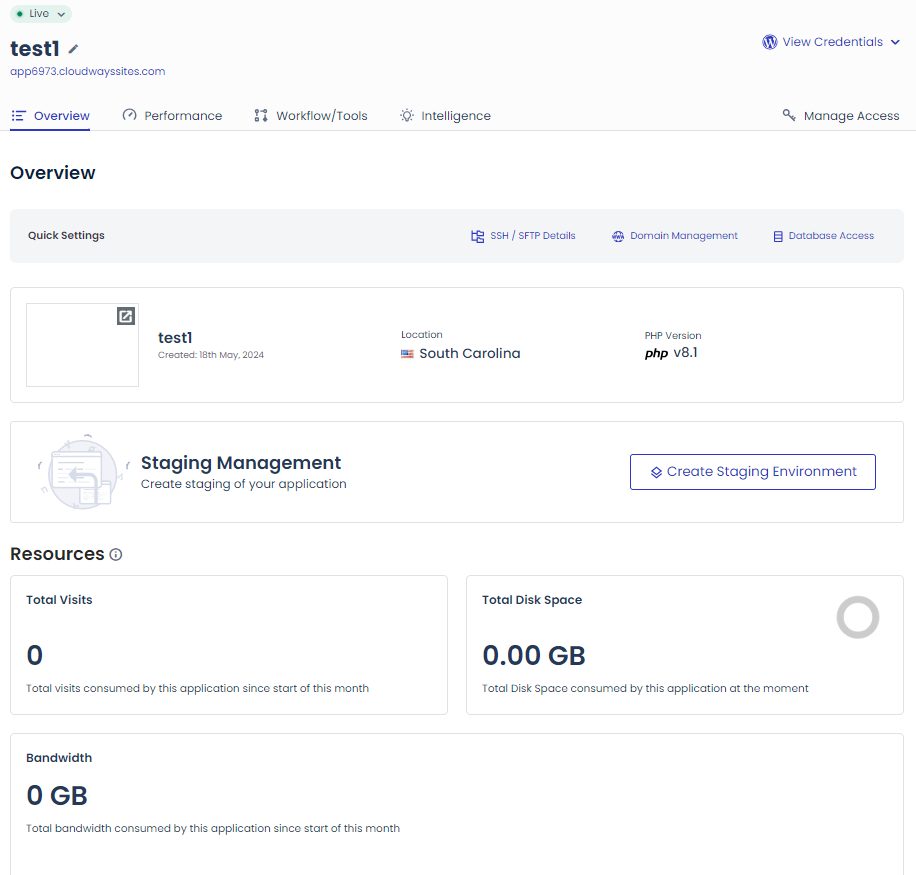
Under the “Performance” tab, you will notice the Edge CDN and Object Cache Pro options. Both are enabled by default, and you can not set anything. Everything is managed by the CloudWays team.
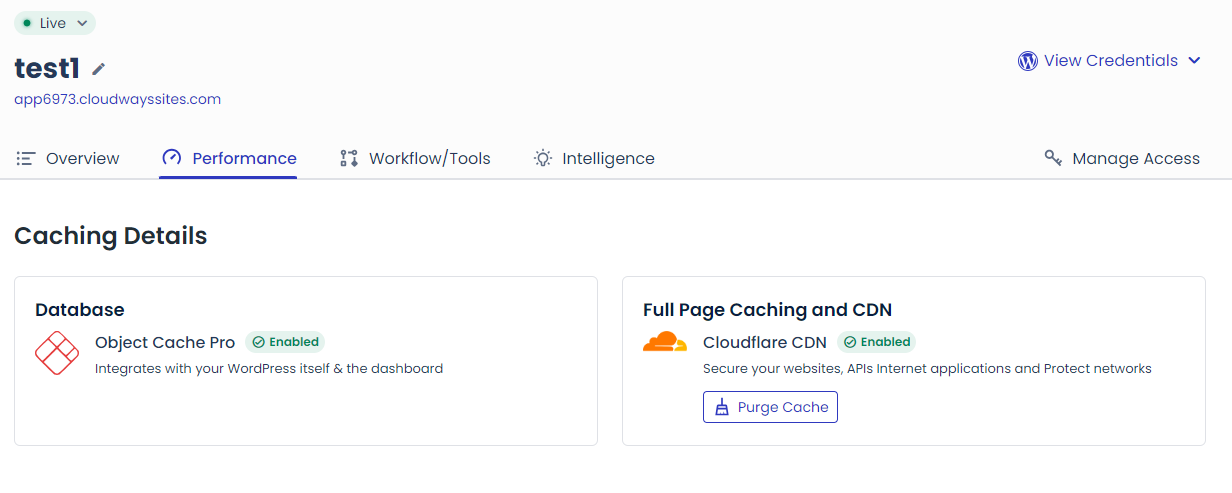
By default, CloudWays will create a subdomain for your application. For live sites, you need to add your domain under domain management.
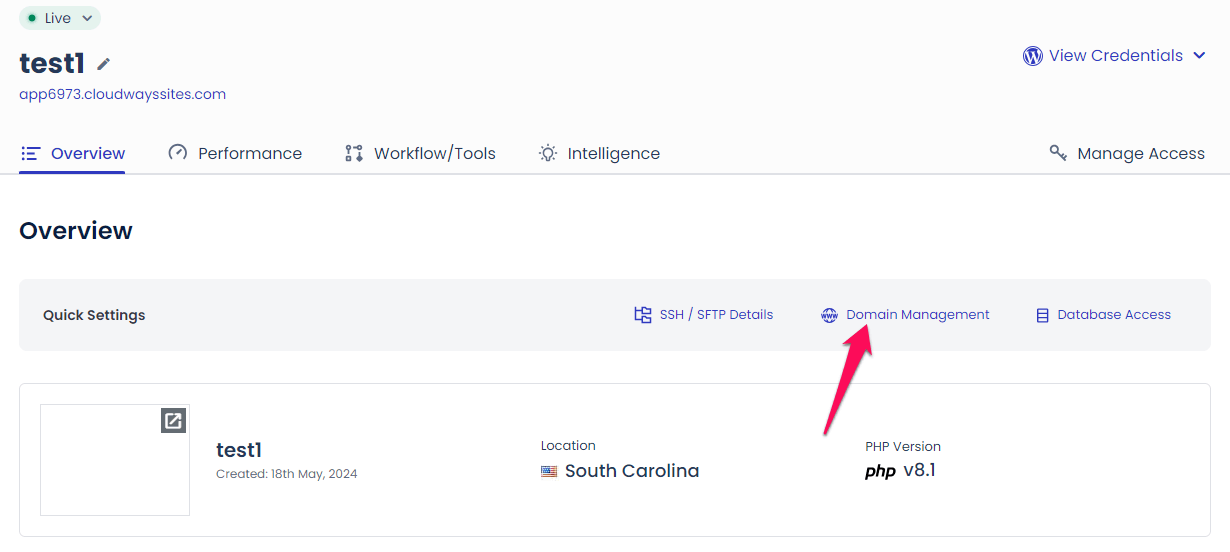
You need to add the domain name here. All the CloudFlare features will automatically be added to the domain once you add them.
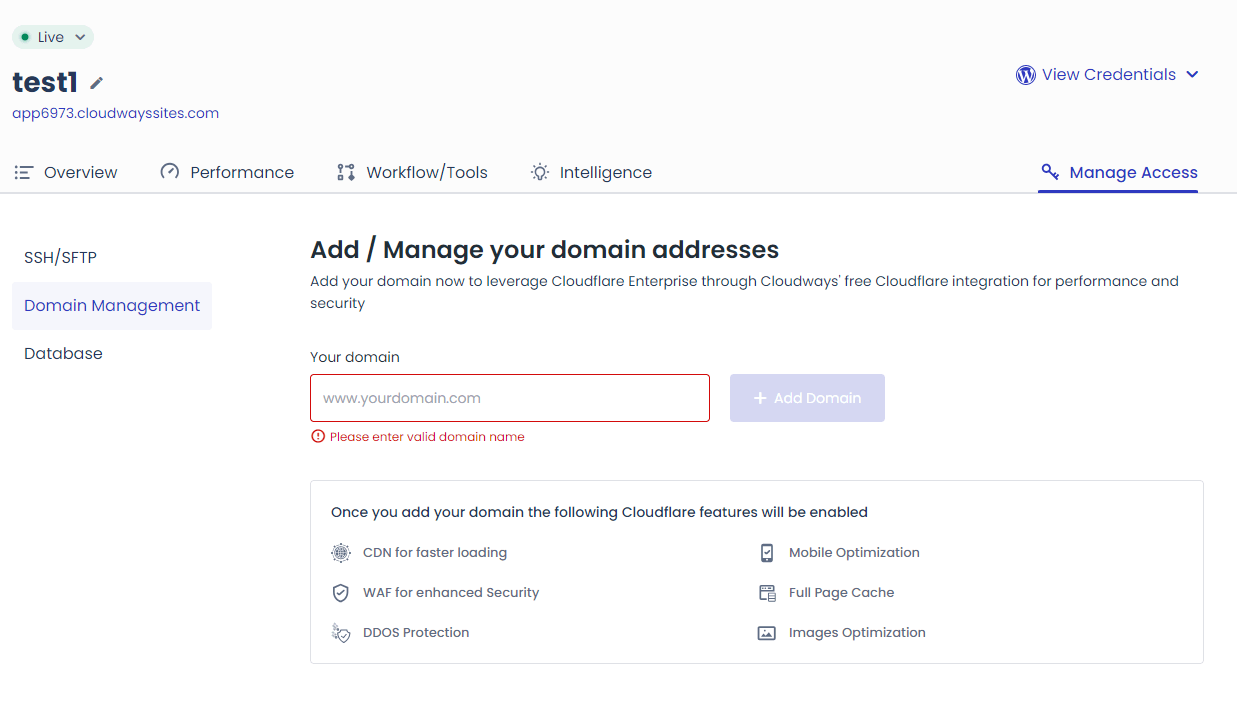
Once done, you can access your site using the domain name you have just added.
Performance Testing: Ensuring Readiness For Traffic Surges
koddr.io has run a performance test on CloudWays Autonomous against industry leaders like WP Engine and Kinsta to measure how well Cloudways Autonomous manages high-traffic conditions compared to similar hosts.
Koddr.io crafted the test scenario using the K6 load testing framework, ensuring a comprehensive performance evaluation under varying loads.
The tests were conducted on a full-fledged WooCommerce store, and the following key matrices were measured against different numbers of concurrent users.
- Add to cart per second.
- Checkout per second
- Average response time
- Requests per second
- Error rates
Add To Cart Per Second
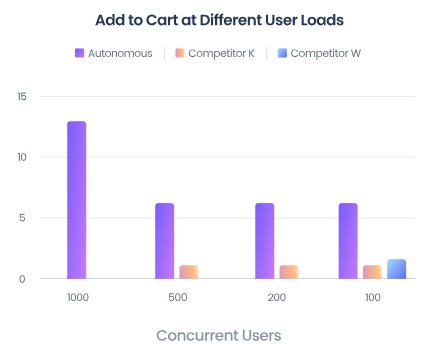
CloudWays Autonomous: At 100 concurrent users, CloudWays were pretty well with 6.9 checkouts per second, whereas at 1000 simultaneous users, it was doing around 12.5 checkouts per second
Kinsta: Kinsta was doing a moderate 1.07 checkout per second for 100 concurrent users, but for 1000 concurrent users, it failed.
WP Engine: Similar to Kinsta, it could perform only 1.49 checkouts per second at 100 concurrent visitors, whereas, at 1000 users, it failed.
WINNER: CloudWays Autonomous
Checkout Per Second
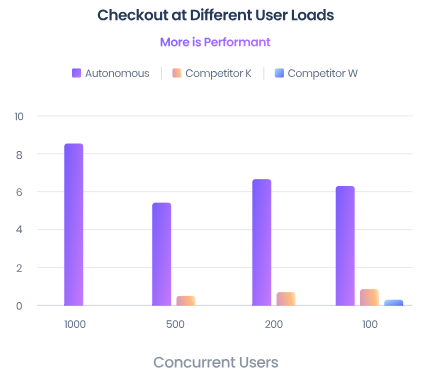
CloudWays Autonomous: CloudWays Autonomous did very well with 100 concurrent visitors as well as with 1000 visitors. At 1000 simultaneous users, it could do more than eight checkouts, which was impressive.
Kinsta: Kinsta performed better than WP Engine but failed behind Cloudways. At 500 concurrent users, it could only perform close to 0.50 checkouts.
WP Engine: WP Engine was the worst. It showed some potential at 100 users, but it failed as the traffic grew.
WINNER: CloudWays Autonomous
Average Response Time

CloudWays Autonomous: CloudWays Autnomonous impressed with the response time as the average response time at 200 users was around 2.7 seconds, whereas, at 1000 users, it was 9.6 seconds
Kinsta: Kinstat took a massive average of 23 seconds to load pages at 200 concurrent users. As the traffic load spikes, Kinsta continues to perform badly.
WINNER: CloudWays Autonomous
Requests Per Second
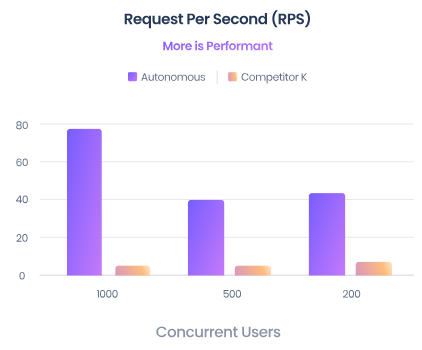
At 200 users or 1000 users, CloudWays Autonomous outperformed its competitors with 77.98 requests per second for 1000 users, whereas Kista could handle only 5.8 requests per second for the same traffic load.
WINNER: CloudWays Autonomous
Error Rates

Cloudways Autonomous also impressed here with just .10% error rates at 200 concurrent users and 4.5% at 1000 users. Kinsta and WP Engine performed badly, Kinsta being a little better than WP Engine.
WINNER: CloudWays Autonomous
Performance Optimization Techniques For High-Traffic Blogs
Unlimited PHP Workers: Understanding Their Role In Handling Requests
A PHP worker is a computing process that runs in the background on a server and executes PHP code.
In WordPress, the role of PHP workers is to process tasks in the background, create pages, generate reports, and more.
They generate and serve HTML pages for site visitors and decide how many uncached requests the site can process at a time.
If there are more requests than the set of PHP workers can handle, the requests must wait until the past requests are executed.
CloudWays Autonomous offers unlimited PHP workers, which means no requests need to wait. That ensures that your website will always load fast and never go offline.
True Auto Scale
With GKE horizontal scaling, CloudWays Autonomous is capable of auto-scaling to any extent and can handle virtually any number of traffic.
Auto Scale ensures that the CPU, RAM, and other resources are dynamically adjusted to handle the additional traffic load. You only need to pay extra for the additional resources.
Unlimited PHP workers and auto-scaling complement each other, as the concept of unlimited PHP workers won’t work unless you offer an infinite auto-scaling feature.
Cloud Flare Enterprise Plan
CloudWays has tailored the CloudFlare enterprise plan to suit their environment, and it is free to all CloudWays Autonomous users. Due to its high POPs and low latency, your website will never face any downtime.
CloudFlare Enterprise not only speeds up content delivery but also reduces the load on your server, allowing your website to handle more visitors without a drop in speed.
CloudFlare enterprise also brings key security features like unmetered DDoS protection, Web application firewall, etc., which are unavailable in the free plan.
Integrated Object Cache Pro
Yes, it’s true. CloudWays Autonomous offers Object Cache Pro for free to all its users. Object Cache Pro can drastically improve the response time to database queries.
It saves the database queries in memories, thus it responds fast for repeated visitors. Database caching is crucial for high-traffic sites as too many read-and-write operations need to be executed each second during peak traffic loads.
Dedicated Support For High Traffic Challenges
24/7 Support Tailored To High Traffic Needs
Cloudways Support was always good. They were responsive and offered multiple ways to contact their support team.
With Cloudways Autonomous, you will get support 24/7 on any issues related to your high-traffic website needs.
You can always connect with the support team via chat, emails, or calls; they are always there by your side.
Importance Of Responsive Support During Traffic Peaks
Responsive support makes a lot of difference during traffic peaks. A couple of seconds of downtime could cost you thousands of dollars.
Thankfully, CloudWays support team is very responsive, especially over chat, and you get most of your queries answered quickly.
Here are the Cloudways support features in a nutshell.
- 24X7X365 live chat support
- Ticket based support
- Server configuration and customization
- Phone-based support
- Fixing application-level issues
- Server-level Cron job creation
- Application monitoring
Securing High-Traffic WordPress Blogs
Security Risk Associated With High-Traffic Blogs
Spammers and hackers always target high-traffic blogs as they can do the maximum damage through them. A robust and full security system is essential to protect those high-traffic blogs from bad hands.
Implementing Robust Security Measures, Including Enterprise DDoS Protection and WAF
Although CloudWays has its proprietary security system that protects websites from different kinds of threats, Cloudways Enterprise carries many security features that can further enhance the security of your websites.
Here are the security features offered by CloudWays Autonomous Hosting
- The dedicated firewall at the server level
- SSL Certificate
- Regular security patching
- Two Factor Authentication
- Advanced DDoS protection
- Web Application Firewall
- Safeupdate for WordPress
Pricing For High Traffic Environment
Understanding The Pricing Structure Of CloudWays Autonomous
The pricing plan of CloudWays Autonomous is very straightforward. The plan costs $35 with 1 WordPress installation, 15 GB disk space, 100GB bandwidth, and 30K traffic.
Since CloudWays Autonomous offers auto-scaling, here is the pricing for the extra resource usage.
- $1 for additional 10 GB bandwidth
- $1 for an additional 1000 visits
- $2 for an additional 1 GB of disk space
CloudWays Autonomous pricing plans are shown below. Please remember that CloudWays Autonomous is a fully managed service, and you cannot choose the server and its resources.
All plans include the following features.
- CloudFlare Enterprise
- Object Cache Pro
- Unlimited PHP Workers
- Auto Scaling
- Load Balancing
- Multiple PHP Versions
- Back-Up And Restore
15 GB Space
100 GB Bandwidth
30K Traffic
25 GB Space
200 GB Bandwidth
70K Traffic
40 GB Space
300 GB Bandwidth
125K Traffic
60 GB Space
400 GB Bandwidth
200K Traffic
90 GB Space
900 GB Bandwidth
500K Traffic
120 GB Space
1200 GB Bandwidth
1000K Traffic
200 GB Space
3000 GB Bandwidth
1500K Traffic